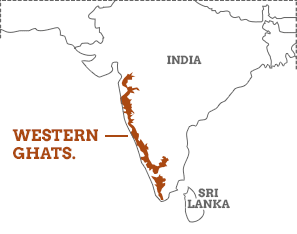Discuss the Balancing Economic Growth and Environmental Sustainability in Urban planning in India.
An industrial cluster is a geographic concentration of interconnected companies, suppliers, and supporting institutions within a specific industry or sector, facilitating collaboration, knowledge exchange, and shared resources to enhance the competitiveness and innovation of the businesses involved.Read more
An industrial cluster is a geographic concentration of interconnected companies, suppliers, and supporting institutions within a specific industry or sector, facilitating collaboration, knowledge exchange, and shared resources to enhance the competitiveness and innovation of the businesses involved. Examples include Auto Tech Cluster in Ludhiana, and Hi-tech Metal Cluster in Mohali. They hold immense significance by shaping the economic topography of India.
Significance of Industrial Clusters for India:
- Enhanced Productivity: Industrial clusters promote economies of scale and scope, enabling companies to access specialized skills, technologies, and resources. This leads to increased productivity and efficiency. Bengaluru’s IT cluster serves as a prime example.
- Reduced Costs: Clusters benefit from shared infrastructure, logistics, and supply chains, which can lead to cost reduction. For example, the automotive cluster in Chennai, known as the “Detroit of India,” benefits from a well-established supply chain network, reducing production costs for automakers.
- Skilled Workforce: Clusters attract a pool of skilled workers and professionals with expertise in the specific industry, creating a competitive labor market. Hyderabad’s IT cluster serves as an example.
- Access to Markets: Proximity to customers and suppliers within a cluster simplifies market access and distribution networks. For example, the textile cluster in Tirupur, has easy access to domestic and international markets, making it a major exporter of textiles and garments.
- Global Competitiveness: Concentrations of industries in clusters can enhance a region’s global competitiveness by fostering specialization and expertise in that industry. The diamond polishing and trading cluster in Surat, Gujarat, accounts for 90 percent of the world’s diamond processing, contributing to India’s global leadership in the diamond industry.
- Knowledge Spillovers: Clusters facilitate knowledge spillovers, where innovations and best practices spread quickly among businesses. This fosters a culture of continuous improvement. For example, ITC Food Park in Kapurthala serves as an example.
- Sustainability and Environment: Clusters can focus on sustainable practices and environmental protection. For instance, the textile and apparel cluster in Coimbatore, is known for adopting eco-friendly production processes, contributing to a more sustainable textile industry.
Industrial Clusters in India and Their Characteristics:
- Tirupur Textiles Cluster:
- Characteristics:
- Tirupur boasts over 50% of India’s knitwear-based apparel product exports.
- The apparel industry in Tirupur is primarily composed of MSMEs, constituting 95% of the sector.
- Around 9,000 units in Tirupur employ approximately 6 lakh workers directly, with 65% being semi-literate rural women.
- The cluster’s consistent growth is fostered by robust infrastructure, local entrepreneurial skills, leadership, and favorable State Government policies.
- Characteristics:
- Bengaluru Science & Technology Cluster (BeST):
- Characteristics:
- The identified sectors for focus are Information Technology, Health & Wellness, Urban Life, and Futuristic Technologies.
- Teams have been formed to focus on diverse areas such as OneHealth, Digital Health, Precision Agriculture, Urban Transportation, Monsoon & Climate Change, Quantum Technologies, Active Matter & Robotics, and Jet Engine development.
- A Section 8 company is being established to foster collaboration among more than 50 organizations, including academic institutions, industry partners, civil society, and government bodies. This independent entity will offer organizational support and oversee resource management.
- Characteristics:
- Hyderabad Pharma City (HPC):
- Characteristics:
- It is the world’s largest integrated cluster for pharmaceutical industries.
- Focuses on Research and Development and Manufacturing.
- It has been recognized as a National Investment and Manufacturing Zone (NIMZ) by the Government of India.
- Characteristics:
- ITC Food Park, Kapurthala:
- Characteristics:
- First mega food park of Punjab.
- Spans over 72 acres of land.
- At the ITC Food Park, a wide array of popular brands, including ‘Aashirvaad,’ ‘Bingo!,’ ‘YiPPee!,’ ‘B Natural,’ and ‘Sunfeast,’ are manufactured to meet consumer demands.
- Characteristics:
- Electronics Manufacturing Clusters, Greater Noida:
- Characteristics:
- An SPV (Special Purpose Vehicle) has been established for the purpose of overseeing the development, operation, and maintenance of a new Electronic Manufacturing Cluster with no prior industrial infrastructure.
- The cluster offers a streamlined process with single window clearance, facilitating ease of doing business for enterprises operating within it.
- Characteristics:
Industrial clusters serve as pivotal catalysts for India’s economic growth and its drive towards global competitiveness. Given India’s ambitious goal of achieving a $5 trillion economy by 2025, it is imperative to prioritize the nurturing and sustenance of these clusters through strategic investments, robust policy support, and a relentless commitment to fostering innovation.
See less

It is however very challenging to balance on the String Economy Revitalization and Ecology when continuing the construction of India’s city planning initiatives. Here are some strategies that can be considered: Here are the recommended strategies which can be looked at the following: 1. SustainableRead more
It is however very challenging to balance on the String Economy Revitalization and Ecology when continuing the construction of India’s city planning initiatives. Here are some strategies that can be considered:
Here are the recommended strategies which can be looked at the following:
1. Sustainable Urban Planning
2. Investment in Public Transportation
3. Renewable Energy Integration
4. Waste Management and Recycling
5. Water Conservation
6. Urban Green Spaces
7. Smart City Technologies
8. Community Engagement and Education
9. Regulatory and Policy Framework
10. Economic Diversification
Conclusion:
See lessConsequently, the application of these strategies in the planning of cities shall assist India to chase developmental goals side by side with sustainable development of economy and ecology.